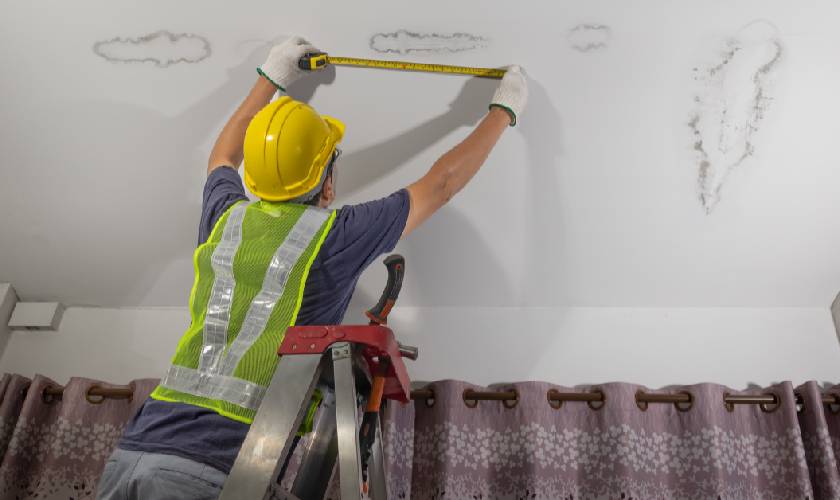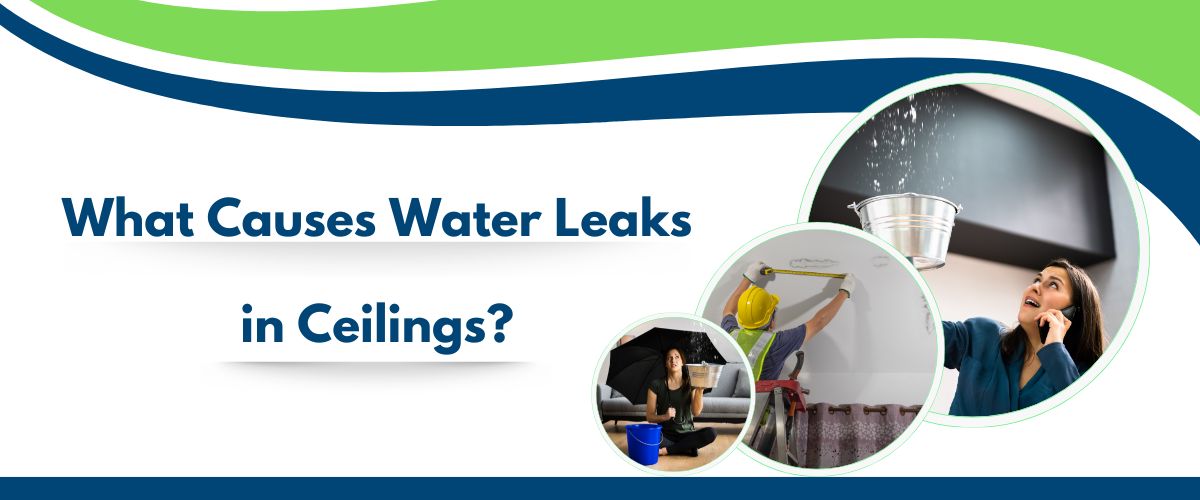Ceiling water leaks catch many people by surprise. Sometimes, you might wake up to brown stains or bulges above your head. You may notice peeling paint or even dripping water. These are not just everyday messes. They point to bigger issues that can turn a quiet home into a place of worry. If you ignore the causes of ceiling water leaks, small leaks can turn into huge problems. Water soaks walls, ruins floors, and grows mold. Mold can make you sick and hurt the structure of your home.
Knowing what causes a leak, how to stop it, and when to call for professional water damage restoration in Highland Park is your first step toward peace of mind. Here are the most common reasons that lead to water leaking through ceilings, along with suggestions on how to address them.
Table of Contents
ToggleCommon Causes of Water Leaks in Ceilings

-
Plumbing Issues
- Deteriorated Joints: Over time, joints and connections can become weak. Seals dry out or crack.
- Pipe Leaks: Old or rusted pipes may burst or drip. Even a small leak can make a mark on your ceiling.
- Damaged Fixtures: Dripping sinks, tubs, and toilets on the floor above can lead to leaks. A steady drip from a bathroom pipe can eat away at plaster and paint.
-
Roof Damage and Failures
Roofs keep out more than just rain. When they fail, water finds its way indoors and often shows up as a wet patch on your ceiling.
- Missing or Damaged Shingles: Even a single missing shingle can let water flow inside.
- Broken Flashing: Flashing seals the edges and valleys of your roof. If it cracks or shifts, water slips under and runs down to the ceiling below.
- Improper Installation: If the roof was not installed correctly, leaks can start anytime it rains.
High winds or fallen branches can open up gaps in your roof. After any big storm, look up at your ceilings. If you spot any damp patches, check your roof right away.
-
Faulty or Aging Appliances
- Water Heaters: A water heater in an attic or closet above your ceiling poses a threat if it leaks.
- HVAC Systems: Heating and cooling units sometimes clog or overflow. Condensation pans can crack, letting water drip onto ceilings below.
- Washing Machines and Dishwashers: Hoses may loosen or fail. Water spills can run beneath floors and rot the ceiling below.
-
Condensation Build-Up
- Poor Ventilation: Rooms with little airflow get damp, which raises the chance of water droplets forming on pipes and ceilings.
- Insulation Problems: Without good insulation, warm, moist air meets cold surfaces. This swap causes water to form and drip.
- HVAC Issues: If your heating or cooling system works too hard or not well, it may cause excess moisture.
How to Identify and Address Ceiling Water Leaks

-
Early Signs of Ceiling Water Damage
Catching small ceiling leaks before they grow means looking for warning signs. Early signs of water damage can let you act before disaster strikes.
Watch for These Clues-
- Yellow or brown stains on the ceiling
- Peeling or bubbling paint
- Drooping, bulging, or sagging areas
- A musty odor or visible mold
- Paint that feels soft or spongy to the touch
- Water stains below roof lines, pipes, or appliances
-
Steps to Take When a Leak is Discovered
- Clear the area and move furniture or valuables.
- Place a bucket or pan under drips to catch water.
- Use towels to blot and dry surfaces as much as possible.
- Turn off the water if you think a plumbing problem is the cause.
- If rain is coming in, cover the area with plastic.
Quick moves can slow down damage until experts arrive. After the mess is under control, call an expert. They have tools to spot hidden water and dry out the area completely so nothing gets missed.
-
When to Call a Professional

Call for help in these cases-
- The ceiling is sagging or about to fall.
- Water keeps coming back in the same spot.
- You see or smell mold.
- A large area is wet or shows signs of damage.
- The leak is near wires, lights, or breaker panels.
The Bottom Line
Water leaks in the ceiling can start small but soon grow into big headaches. The most common causes of ceiling water leaks include problems with plumbing, roofs, old appliances, or moisture buildup. Catching leaks early can keep your home safe and save money.
Be prepared to act quickly if you spot a problem, and do not hesitate to call for water damage restoration if the leak persists, mold appears, or the ceiling is at risk. Take care of your ceiling today, and you protect your whole home for years to come.


